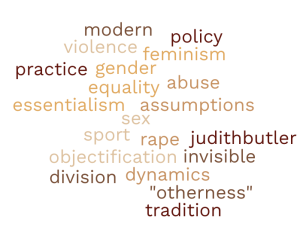1
Section One: The Fundamentals
A) What do we know about sport? What are common assumptions we make about sport and society?
|
Sport Speaks a Universal Language When thinking logistically about sports having a universal language, I would say this statement is fairly true. There are a variety of sports that have a rather set of terms for specific things like how the points are scored or types of penalties that are given. However, thinking about this statement in terms of how people look at the sporting world, a universal language that implies unity and bonding may be a stretch when it comes to reality. Although I believe sports have the ability to bring people together (ex. not being particularly fond of someone and then finding out you both love or hate the same team and then bonding over that), they also hold the power to turn people against each other for no better reason than a difference of opinion. I know many people in my life that are die hard fans of certain teams but will dislike anyone who doesn’t agree with who they chose to root for in a game. Overall, I think the actually universal language of sports are only the terminology that is used within that realm of game, and that the relationships that are built or destroyed are more politically and reflecting on the character of the person arguing. |
Exercise 3: Notebook prompt
What are some other metanarratives about sport that you are familiar with? Find an image or video clip or draw something yourself that captures this idea…
So what? Why does any of this matter? Does it matter? As something we grow up with – live with – play through – we don’t often interrogate the meanings of sport, and perhaps we don’t want to.
But being aware of these assumptions and metanarratives is especially important, I would argue, because of the centrality of sport to our everyday lives, the role that sport plays in shaping our childhood and worldviews and….. [finish that thought]
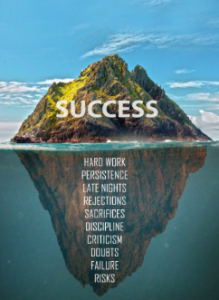
I chose to include this image because although majority of people that play and watch sports know the work and dedication that goes into success, I feel like the discipline that goes into personal success and victories are often over looked. So often I hear people blaming their faults or weak points on their genetics or how they have so much else going on that they do not have the same amount of time to dedicate to achieving their goals as another person who has accomplished that same or similar goal. Being aware of the assumptions that the person succeeding has good genes or a lot of money or something else to pawn off the fact they may have trained for their goals for a very long time and has put in the work to get to where they are now, may help others understand that either way, it does not matter what others are doing, all that matters is that you put in the work to reach your goals. But being aware of these assumptions and meta narratives are especially important, I would argue, because of the centrality of sport to our everyday lives, the role that sport plays in shaping our childhood and worldviews and characteristics of our personality. Someone that has drive, aspiration, and discipline is more likely to achieve their goals and reach their ideal potential when compared to someone who might be used to having things handed to them. However, fair play may come into consideration if one person has been constantly put down for attempting to pursue their dreams or if someone did not have the funds to support themselves to reach their goal. Although, in my opinion if someone is determined enough, they will find a way regardless of road blocks which shows their level of commitment and resilience to challenges they may face.
|
B) What is social justice?
Exercise 4: Padlet Prompt
Think back to the last section and try to look at some of the ideas we discussed differently. How might sport and social justice actually co-exist?
Record any images, video clips, or gifs you added to the padlet and identify a point of intersection between sport and social justice (can be an issue or a barrier or a debate or something you would like to explore in more depth in this course) . Screenshot or paste in your response below.
|
With the rise of understanding mental health and the ways in which sports can help keep a healthy mind, I think the importance of physical health has slipped through the cracks a little bit. I think that there are many athletes that push themselves too hard physically because they are so strong minded that they do not understand the importance of resting. I work in a gym and have for going on 6 years, I have seen many people pass out or injure themselves (ie dropping 300+ lbs on their head) because they have a little bit too much pride to ask for someone to spot them or to do the work that is needed to be put in to lift that weight. It is important to push yourself but some people need to understand that it is okay to ask for help. I also find that men will be quick to compliment people coming in and putting in effort where as women tend to judge and critique more often. I thought this was interesting because there is a normalcy for men to judge and be more tough on others where as women used to give more compliments and praise. (this is not all men and women but an observation I have made over the past few years). This change may be cause people to have a lower confidence or image of themselves no matter the sex and I think this would be an interesting topic to dive deeper into. |
C) Social Justice Reading
(note: this activity is optional!)
D) KINESIOLOGY AND SOCIAL JUSTICE
Exercise 5:
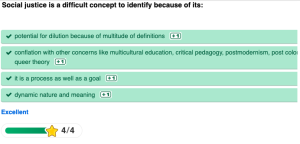


Exercise 6:
What are the implications of bodies-at-risk discourse and the refusal to understand the health gap from a social justice perspective, according to the authors of this article?
| According to the article, understanding the health gap can help to recognize the discrimination that is constructed within the realm of health and fitness. The article mentions the automatic assumptions that are applied to certain groups of people. These assumptions are noted to be painful to those people as they are automatically seen to be :less healthy and fit”, while also being said to lack “self management, self discipline, and self compliance” within health and fitness (Harrison, Azzarito, & Hodge, 2021). This discourse also places blame on the marginalized groups for something that may not be true or an assumption based on a norm set by people that do not have accurate information about that specific group. Refusing to understand this discourse only increases the gap and its power that it holds in terms of the people the rely on the norms that were set. The marginalized groups of people that are at a disadvantage and are the ones being discriminated against simply because of their race, gender, ethnicity, or ability, are the ones being hurt by the gap as they are not offered the same opportunities or support as the majority may be.
|
Section Two: Sport Feminism
Exercise 7: Notebook Prompt
What is feminism? What does it mean to you? Choose one of the images below and explain how it captures your understanding of feminism (or find one that does speak to you and paste this into your pressbook with an explanation of why it matters to you.
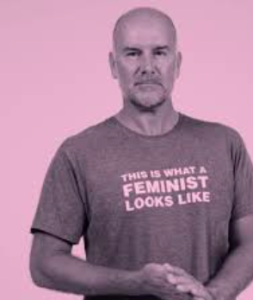
To me, feminism aims to challenge the negative stereotypes about sex and assumptions that have been developed throughout the years and use its power to promote inclusion and equality for all. With this explanation, feminism is important because it aims to help rebuild the community within people’s daily lives and create a safe environment for all that are a part of it. The goals set by feminist movements and feminism in general are important for rebuilding the relationships and reducing the negative associations and stereotypes that have been made because of past thoughts and feelings that have been passed through generations. The way feminism has been shifting into a more influential and powerful movement, the more the older stereotypes are being replaced by more positive ways of thinking and more ways of understanding the intersecting dimensions of society. I chose this photo to represent this because from what I have learned through previous GESO courses, feminism used to be thought of as groups of angry women, complaining about things they did not like in their lives. This photo shows that not only previous thoughts about feminism are not true, but also represents the “this is what a feminist looks like” movement. This movement was seen to be controversial when it started but became a way to show how feminism aims to promote a more inclusive representation of feminism. Along with the message from the movement that includes the t shirts, this photo also is showing that male presenting people can be feminists too. I like this photo because of all the different messages it represents as well as promoting the initiative of the t shirts and the photo itself as the message of what a feminist can look like.
|
Exercise 8: Notes Prompt (optional)
NB: Cornell notes is a great resource that teaches effective notetaking. Unfortunately, our system can’t save notes taken in the H5P app, so this is fully optional.
Exercise 9: Crossword Activity
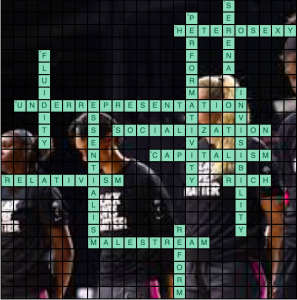
Exercise 10: Padlet Prompt
|
The focus of this word cloud was on gender differences within sports. I thought it was interesting how the article brought up the gender difference in sport including how things like violence and performativity play a role in people’s perceptions of “normal”. I included Judith Butler because the argument that gender is performative is seen all throughout sports and life in general. People are constantly trying to prove they are masculine enough for certain activities or feminine enough to be accepted into certain groups. This idea is especially present in sports because there is a stigma around who plays what sports. For example, more contact sports are seen as male-dominant and more creative sports are seen as female-dominant.
I chose the more violent and abusive words because they show that these issues are not just seen in movies or TV but also in real life and sports. As the article mentions, women’s movements aim to help those who are victims of rape or exploitation and help them to get the justice and peace they deserve. I think it is important to bring those goals into the realm of sports and athletics because, most of the time, women are not as supported by the general public when speaking about things that may make them vulnerable to their male opponents or colleagues.
|

|
|

